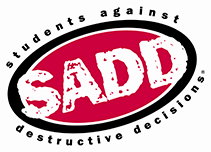If you think someone you are with is overdosing right now call 911 immediately.
What is an opioid overdose?
An opioid overdose happens when you have taken too much of the drug, and your brain is so overwhelmed that it can’t send the message throughout your body to continue breathing. The lack of oxygen to the brain is the key dangerous aspect in an opioid overdose.
Overdoses happen as a process; someone slowly stops breathing which also affects our brain, liver, heart, lungs, and kidneys.
Often people don’t realize that they can overdose up to three hours after using. This is a good time to bring up issues around this such as people may use with other people, but then are alone 3 hours later, or are in one situation when they use and a very different one three hours later.
Using at Home
Home unfortunately doesn’t mean safe, especially after someone gets out of short term treatment or jail. During this time, they are at a high risk for relapse, and if they come home, that’s where they are likely to use. Because their tolerance has dropped, they are at an increased risk for overdose. This is why parents are now trained at Learn to Cope, family nights at programs such as MATC and outreach programs such as this one.
Signs of an Overdose for Depressants
(opiates, heroin, methadone, Xanax, alcohol, etc.)
***What is very important to understand is that someone in an overdose can be up, walking and talking. If they are talking, they are not going to make any sense or be responding to what you are saying to them. With this in mind, this means that once they do fall out they are much further along in the process and have less time for you to seek help.
- Awake, but unable to respond
- Body very limp
- Blue/grey skin tinge – usually lips and fingers show first, sometimes in tips of ears
- Face very pale
- Cool, clammy skin
- Pulse (heartbeat) is slow erratic or has stopped
- Breathing is very slow and shallow, erratic or has stopped
- Passing out
- Choking sounds or a gurgling noise (death rattle)
- Throwing-up
What puts my loved one at risk for an overdose?
Risk Factors
- Mixing of Drugs
Especially other downers like alcohol and benzodiazepines. - Tolerance
Repeated use of a substance may lead to the need for increased amounts to produce the same effect.
Tolerance can decrease as soon as 1-3 days of not using. Relapse after a period of abstinence (such as treatment or jail time) - Quality Control or Fluctuations in Purity
- Fentanyl laced heroin or Fentanyl being sold as heroin
- Physical Health
- Overdose Clusters
- Previous Overdoses
- Using in a New Environment
- Using Alone
Really High vs Overdose
Really High
- Muscles become relaxed
- Speech is slurred/slow
- Sleepy looking
- Nodding
- Will respond to stimulation like yelling, sternal rub, pinching
Overdosing
- Blue lips and /or fingertips
- Deep snoring or gurgling
- Very infrequent or not breathing
- Slow heart beat/pulse
- Heavy nod, will not respond to stimulation
OD Management Strategies: What do I do if someone is overdosing?
Steps:
- Assess the signs
- Stimulation
- Call for Help – 911
- Recovery Position
- Clear airway/Rescue Breathing
- Evaluate the Situation
- Administer Naloxone – if you have it
What is proper stimulation?
The sternum rub.
- Take knuckles and rub hard up and down on breast plate.
- If you do not have access to sternum because someone has a lot of layers on or don’t feel comfortable touching someone’s chest, tell them to rub below the nose and above the upper lip.
- Say the person’s name loudly and tell them that they will administer Naloxone to them if they don’t respond. If the victim is still non responsive, they are in an overdose. If someone responds, they probably should still be monitored to make sure they don’t fall into an overdose.
Tips for Calling 911
- Stay Calm
- Have address and location ready
- Tell the dispatcher that the person has collapsed and whether or not they are breathing – you do NOT have to say it’s an overdose, HOWEVER if they ask, don’t lie
- Naloxone is not a substitute for calling for help. If someone was just in an overdose, and Naloxone worked, they must still seek medical intervention
- Programming fire department or EMS’ number into cell phone
- Always calling from a land line over a cell phone
- If you live near a hospital, take the person all the way into the ER and not leaving someone in a parking lot
Recovery Position
If you have to leave someone for ANY reason, leave them in the Recovery Position.

Rescue Breathing
 Rescue breathing is done for an overdose victim, NOT CPR! The victim is having a respiratory emergency, not a cardiac emergency. Compressions are not helpful, because an overdose victim usually still has a pulse, we need to breath for a person to keep them alive.
Rescue breathing is done for an overdose victim, NOT CPR! The victim is having a respiratory emergency, not a cardiac emergency. Compressions are not helpful, because an overdose victim usually still has a pulse, we need to breath for a person to keep them alive.
- Tilt the victim’s head back and lift the chin up, then pinch the nose shut.
- Give 2 slow breaths into the mouth. Blow until the chest gently rises.
- Check for a pulse to make sure the heart is still beating.
If a pulse is present but victim is still not breathing…
- Give 1 slow breath about every 5 seconds. Do this for about a minute, 12 breaths.
- Recheck pulse and breathing about every minute
What NOT to do
- Do NOT leave the person alone – they could stop breathing
- Do NOT put them in a bath – they could drown. Cold water drops the core body temperature and increases how quickly the person overdoses. Also, the water gets in the person’s nose or mouth causing drowning. The person will also need to be removed from the bath tub, but is full grown, dead weight and soaking wet, so they are heavier and slippery.
- Do NOT induce vomiting – they could choke
- Do NOT give them a drink – they could throw up. If a person can’t hold a drink on their own they shouldn’t have it.
- Do NOT put ice down their pants – Their body temperature is already decreasing, this will only increase the pace in which this is happening and put them deeper into an overdose.
- Do NOT stimulate in a way that could cause harm (slapping too hard, kicking their testicles, burning their feet, etc. Stimulation is unnecessary if the sternum rub or telling the victim you will Naloxone them is ineffective, they are in an overdose.
- Do NOT inject them with anything (milk, saltwater, coke) This will waste time and make things worse.
- DO NOT WAIT for the individual to get over it, they could suffer permanent brain damage and DIE


